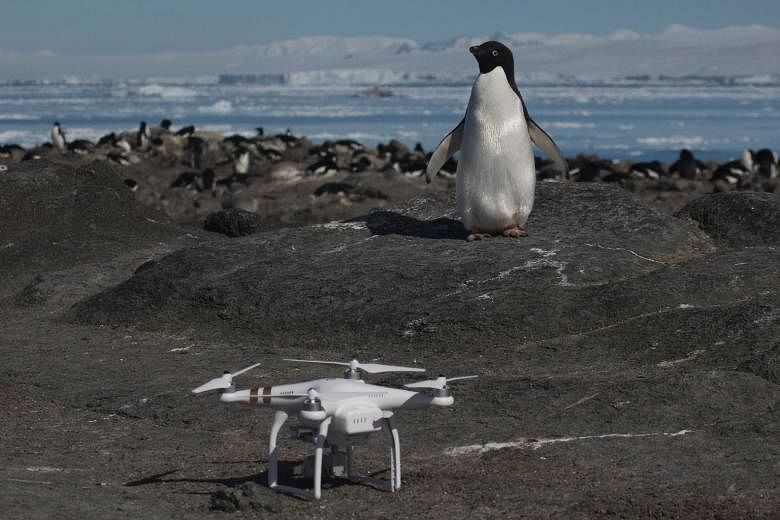SYDNEY/PARIS • Sea ice cover in Antarctica has dropped to its second- lowest on record, Australian authorities said yesterday, adding that it was not yet clear what was driving the reduction after several years of record-highs.
The report came as scientists said earlier this week that the Arctic region was seeing record high temperatures, with sea ice covering the smallest area in winter since records began more than half-acentury ago.
The Australian Antarctic Division (AAD) said the latest satellite data showed a total of 2.15 million sq km surrounding the icy continent during the lowest point last month, during the summer season.
The minimum record was set in March last year, when a summertime reading of 2.07 million sq km was recorded, the AAD said. Last year also saw near record-lows for the wintertime maximum sea ice cover, at 18.05 million sq km.
"Since August 2016, the sea ice coverage has been tracking well below the long-term average," Bureau of Meteorology Antarctic scientist Phil Reid said in a statement.
"In 2017, the wintertime maximum sea ice extent was the secondlowest on record at 18.05 million sq km following closely on the heels of successive record highs in 2012, 2013 and 2014."
Mr Reid said the variations were a "significant departure" from the overall increasing trend in Antarctic sea ice of about 1.7 per cent each decade since 1979.

After reaching its lowest point in summer, the sea ice - which is created when the ocean surrounding the continent freezes - reforms in autumn and expands around Antarctica.
AAD scientist Rob Massom said researchers were still trying to determine what was driving the changes and the variability in the sea ice cover, and said understanding the processes was a "high priority".
"The ice cover plays a crucially important role both in the global climate system and as a key habitat for a wide range of biota from micro- organisms to great whales," he added in a statement. "Sea ice conditions also have a major impact on shipping and logistical operations in the Southern Ocean."
Meanwhile, a thriving hot spot of some 1.5 million Adelie penguins has been discovered on the remote Danger Islands in the east Antarctic, surprised scientists announced yesterday.
Just 160km away in the west Antarctic, the same species is in decline due to sea ice melt blamed on global warming, they said.
The first complete census revealed that the Danger Islands host more than 750,000 breeding pairs of Adelie penguins, more than the rest of the Antarctic Peninsula region combined, the team reported in the journal Scientific Reports.
It included the third and fourthlargest Adelie penguin colonies in the world.
The find "is certainly surprising and it has real consequences for how we manage this region," study co-author Heather Lynch of Stony Brook University said.
The islands, which lie at the tip of Antarctica nearest South America, have rarely been visited, and the new discovery was thanks to Earthmonitoring satellites, the team from America, Britain and France, said.
AGENCE FRANCE-PRESSE

